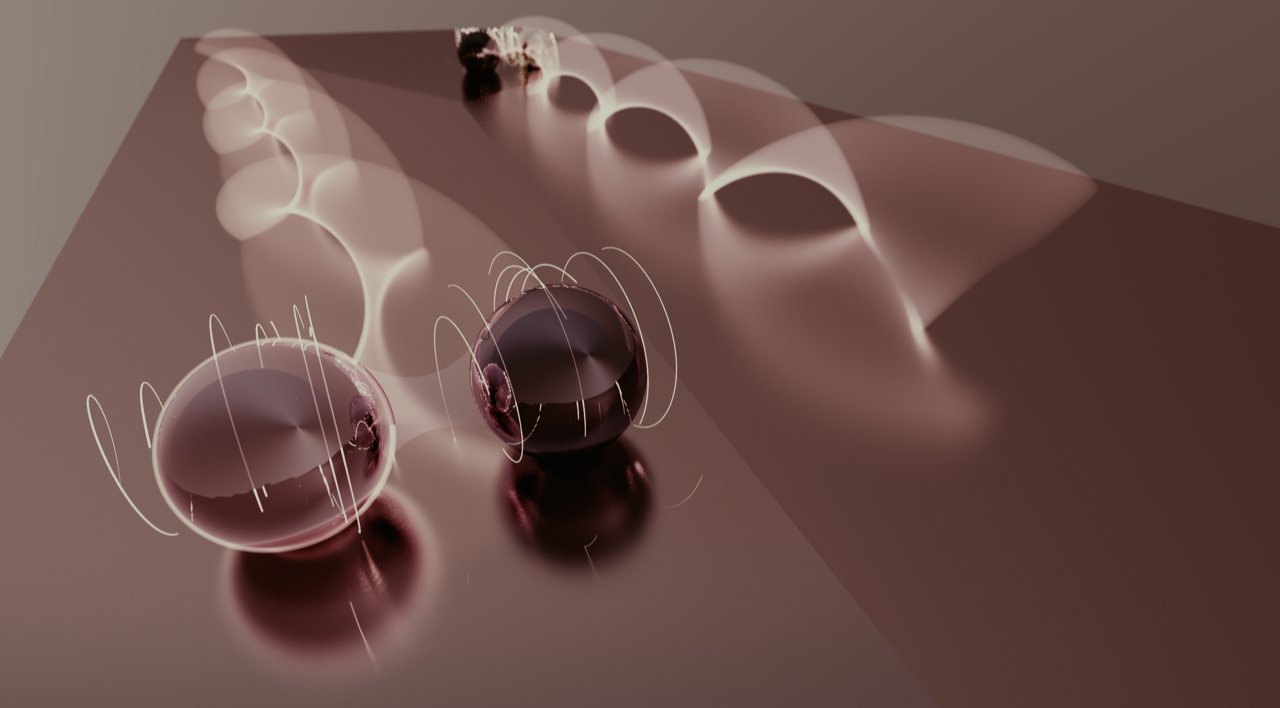 New measurements show evidence for the presence of exotic Majorana particles on the surface of an unconventional superconductor, Uranium ditelluride. Graphic provided by Dr. E. Edwards, Managing Director of Illinois Quantum Information Science and Technology Center (IQUIST).
New measurements show evidence for the presence of exotic Majorana particles on the surface of an unconventional superconductor, Uranium ditelluride. Graphic provided by Dr. E. Edwards, Managing Director of Illinois Quantum Information Science and Technology Center (IQUIST).
Now a team of researchers at the University of Illinois, led by physicist Vidya Madhavan, in collaboration with researchers from the National Institute of Standards and Technology (NIST), the University of Maryland (UMD), Boston College, and ETH Zurich, have used high-resolution microscopy tools to peer into the inner-workings of an unusual type of superconductor, uranium ditelluride (UTe2). Their measurements reveal strong evidence that this material may be a natural home to an exotic quasiparticle that’s been hiding from physicists for decades. The study was published March 26, 2020 in the journal Nature.
The particles in question were theorized back in 1937 by an Italian physicist named Ettore Majorana. Since then, physicists have been trying to prove that they exist. Scientists think a particular class of materials called chiral unconventional superconductors may naturally host Majoranas. UTe2 may have all of the right properties to spawn these elusive quasiparticles.
“We know the physics of conventional superconductors and understand how they can conduct electricity or transport electrons from one end of a wire to the other with no resistance,” said Madhavan. “Chiral unconventional superconductors are much rarer, and the physics is less well known. Understanding them is important for fundamental physics and has potential applications in quantum computing.”
Inside of a normal superconductor, the electrons pair up in a way that enables lossless and persistent currents. This is in contrast to a normal conductor, like copper wire, which heats up as current passes through it. Part of the theory behind superconductivity was formulated decades ago by three scientists at the University of Illinois who earned a Nobel prize in physics for their work. For this conventional kind of superconductivity, magnetic fields are the enemy and break up the pairs, returning the material back to normal. Over the last year, researchers showed that uranium ditelluride behaves differently.
In 2019, Sheng Ran and Nicholas Butch (both co-authors on this study affiliated with the UMD Quantum Materials Center and NIST) and their collaborators announced that UTe2 remains superconducting in the presence of magnetic fields up to 65 Tesla, which is about 10,000 times stronger than a refrigerator magnet. This unconventional behavior, combined with other measurements, led the authors of that paper to surmise that the electrons were pairing up in an unusual way that enabled them to resist break-ups. The pairing is important because superconductors with this property could very likely have Majorana particles on the surface. The new study from Madhavan and collaborators now strengthens the case that UTe2 is one of these superconductors.
The team used a high-resolution scanning tunneling microscope to look for evidence of the unusual electron pairing and Majorana particles. This microscope not only maps out the surface of uranium ditelluride down to the level of atoms but also probes what’s happening with the electrons. The material itself is silvery, with steps jutting up from the surface. These step features are where evidence for Majorana quasiparticles is best seen. They provide a clean edge that, if predictions are correct, should show signatures of a continuous current that moves in one direction, even without the application of a voltage. The team scanned opposite sides of the step and saw a signal with a peak. But the peak was different, depending on which side of the step was scanned.
“Looking at both sides of the step, you see a signal that is a mirror image of each other. In a normal superconductor, you cannot find that,” said Madhavan. “The best explanation for seeing the mirror images is that we are directly measuring the presence of moving Majorana particles.” The team says that the measurements indicate that free-moving Majorana quasiparticles are circulating together in one direction, giving rise to mirrored, or chiral, signals.
Madhavan says the next step is to make measurements that would confirm that the material has broken time-reversal symmetry. This means that the particles should move differently if the arrow of time were theoretically reversed. Such a study would provide additional evidence for the chiral nature of UTe2.
If confirmed, uranium ditelluride would be the only material, other than superfluid He-3, proven to be a chiral unconventional superconductor. “This is a huge discovery that will allow us to understand this rare kind of superconductivity, and maybe, in time, we could even manipulate Majorana quasiparticles in a useful way for quantum information science,” Madhavan said.
This story was originally published by the Grainger College of Engineering at the University of Illinois. It has been adapted with minor changes here.